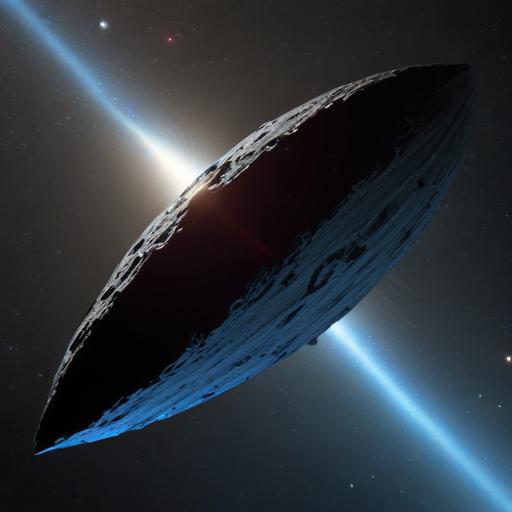Interstellar visitor 3I/ATLAS may glow from its own nucleus, says Avi Loeb
Harvard astrophysicist Avi Loeb and a collaborator have challenged NASA’s classification of 3I/ATLAS as a comet, arguing that the interstellar object appears to emit its own light rather than simply reflecting sunlight. In a blog post, the researchers say a close look at photos released by NASA suggests the glow comes primarily from the object’s core, not from reflected solar illumination.
Loeb and his colleague analyzed imagery from NASA’s observations and concluded the brightness profile around 3I/ATLAS is dominated by the nucleus. They contend that the light could be produced by a source smaller than 100 meters across, which would make the object far smaller than many initial estimates and more comparable in size to other known interstellar visitors such as Oumuamua and Borisov. If the object were simply reflecting sunlight, the researchers say, 3I/ATLAS would have to be about 12 miles long, a scenario they deem unlikely.
The paper presents two more speculative possibilities. One is that the glow could arise from a natural nuclear source—perhaps a rare fragment from a nearby supernova rich in radioactive material. Loeb notes, however, that such a reservoir of radioactive elements in interstellar space would be scarce. The alternative is that 3I/ATLAS could be a spacecraft powered by nuclear energy, with dust accumulated on its forward surface contributing to the observed light. Both ideas, Loeb cautions, require stronger evidence to be viable hypotheses.
Loeb also points to the object’s unusually fine-tuned trajectory as supporting the possibility that something more than a natural asteroid or comet is at play. The current path will place 3I/ATLAS behind the Sun from Earth’s perspective as it makes its closest approach, with subsequent passes near Mars and Jupiter.
Discovery and NASA’s stance are acknowledged in the report. 3I/ATLAS was first detected by the ATLAS survey in Chile on July 1, and NASA continues to classify it as a comet in its official statements. Loeb has urged further observations with existing missions: the Mars Reconnaissance Orbiter’s HiRISE camera to image 3I/ATLAS when it comes within about 17 million miles in early October, and NASA’s Juno spacecraft to attempt observations during its near-Earth pass next spring.
Loeb also noted a prior incident in which NASA identified a new asteroid that later turned out to be Elon Musk’s Tesla Roadster launched into space, using it as a cautionary reference for the need for careful verification.
Commentary and outlook
If Loeb’s interpretation gains traction, it would prompt a major rethinking of what interstellar visitors look like and how they behave, highlighting the importance of direct, high-resolution observations to determine whether such objects are natural or engineered. Critics will stress the need for independent verification and peer-reviewed analysis before any conclusions about light sources or potential propulsion are drawn.
Bottom line
3I/ATLAS remains a subject of intense scientific interest and debate. The coming months of targeted observations by available spacecraft could prove decisive in testing whether the glow is intrinsic to the object, a result of reflection, or something else entirely. The ongoing discussion underscores how interstellar visitors continue to challenge our understanding of the solar system and the broader cosmos, while offering a focused opportunity to advance observational astronomy and planetary science.
